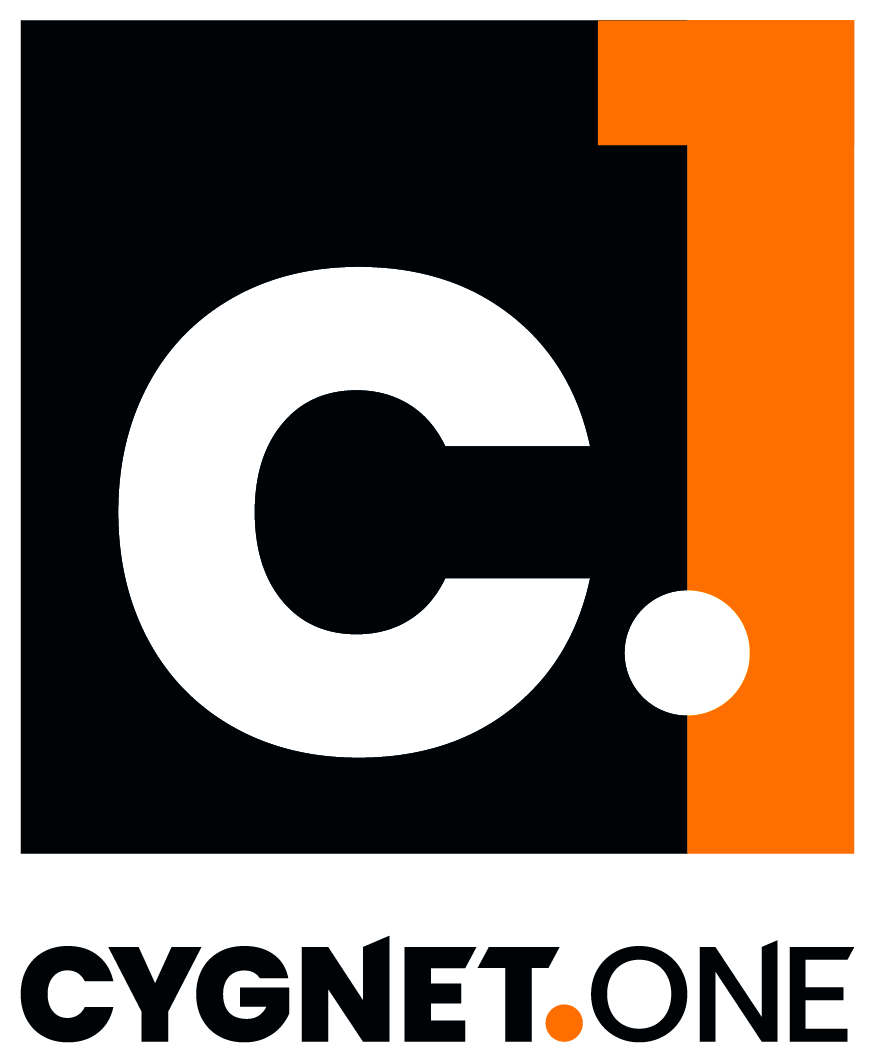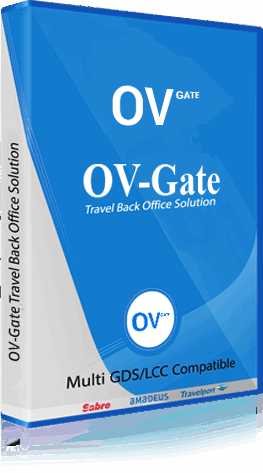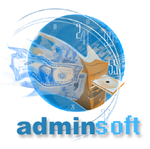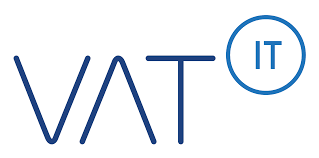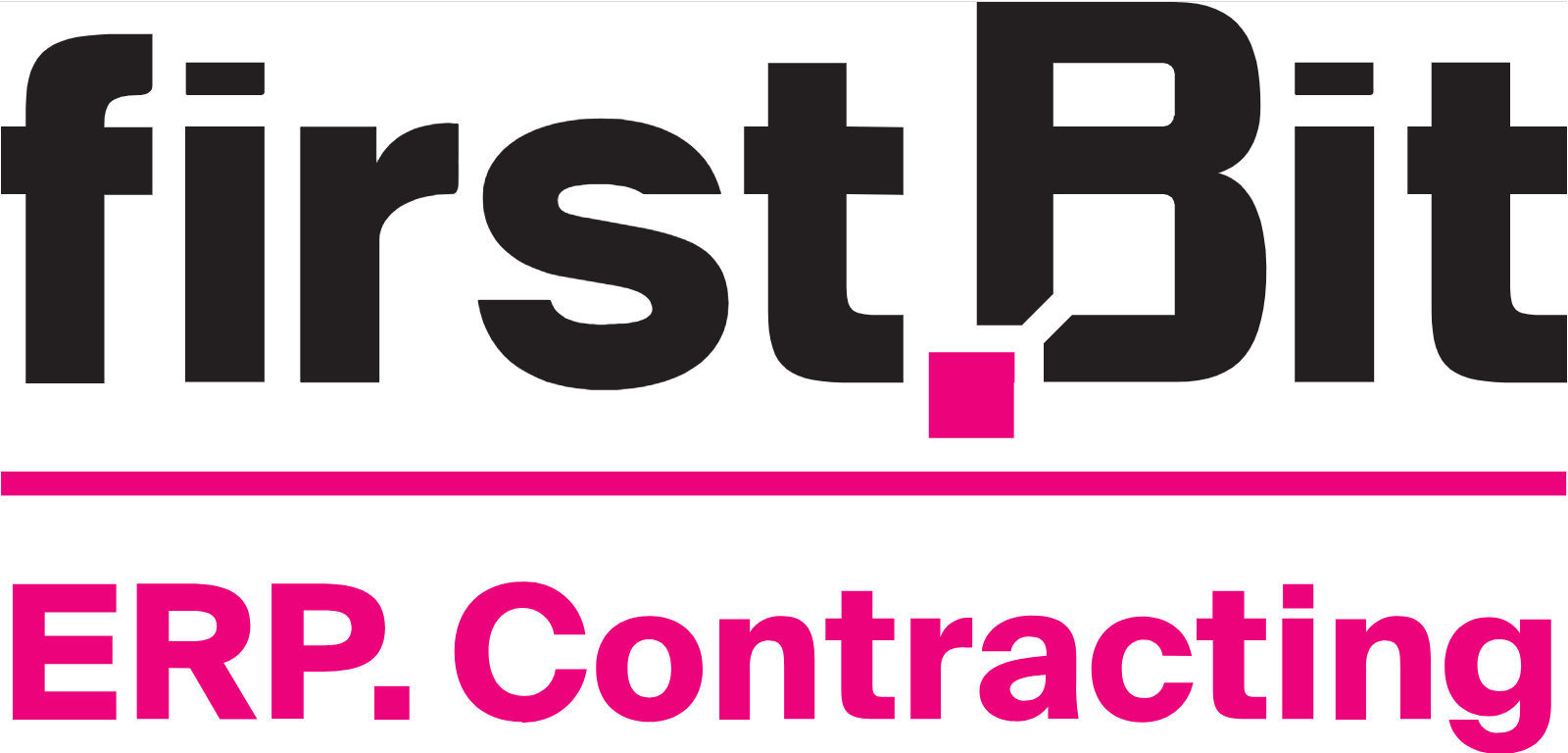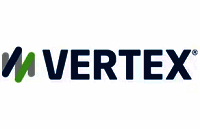Yes, VAT software can be accessed from a variety of devices and platforms, including PCs, laptops, tablets, and smartphones. This enables businesses to access and manage their VAT transactions from anywhere and at any time. Most VAT software is also compatible with several operating systems, including Windows, MacOS, and mobile platforms like as iOS and Android. This flexibility guarantees that businesses of all sizes may manage VAT in a seamless and efficient manner.
List of 20 Best VAT Software
EZ VAT - the leading VAT accounting software designed specifically for businesses in the UAE. This comprehensive solution streamlines your VAT management with features like debtor and creditor tracking, expense monitoring, and automatic generation of...Read More EZ VAT
Experience the unbeatable tax compliance solution with Cygnet Tax - Global. Effortlessly manage your VAT obligations in UK, Europe, and GCC regions with our automated tax return preparation, tracking, and management features. Say goodbye to manual pr...Read More Cygnet Tax - Global
ERPNext is a, open-source ERP software that offers businesses the flexibility and independence to tailor their ERP system according to their needs. With the option to choose your preferred hosting provider or self-host, you maintain full control of y...Read More ERPNext
OV Gate - the flagship software of Oneview IT Solutions. Developed in the UAE and backed by years of collaboration with the Middle Easts travel management sector, OV Gate is a solution. Our unrivaled knowledge and skills in the industry have enabled...Read More OV GATE
Bluesky solution for freelancers and small businesses. Simplify your invoicing and time tracking tasks with this innovative software, giving you more time to focus on expanding your business. Effectively manage your projects and finances with ease, g...Read More Bluesky
Moneypex is a accounting software that simplifies bookkeeping and streamlines financial management for businesses. Designed for startups, contractors, and sole traders, this all-in-one solution centralizes your finances in one place, saving you time...Read More Moneypex
RealSoft ERP is a system specifically designed to optimize operations and unify data for businesses of any scale. This advanced ERP solution seamlessly integrates management information onto one platform, catering to the needs of small and large ente...Read More RealSoft ERP
Adminsoft Accounts is a highly efficient and easy-to-use accounting software perfect for small and medium-sized businesses. It streamlines financial tasks and offers essential features including invoicing, inventory management, and payroll processing...Read More Adminsoft Accounts
DayBook is a accounting software that simplifies all your financial tasks. Developed specifically for Saudi Arabia, it features specialized tools for VAT accounting to ensure adherence to local laws. Boasting multi-language support for 27 languages,...Read More DayBook
Sage Accounting, a user-friendly software catered towards the needs of start-ups, sole traders, and small businesses. Easily track payments, manage invoicing, calculate and submit VAT, and even add Payroll as an additional feature with our various pl...Read More Sage Accounting
PACT ERP solution for businesses of all sizes. This robust software simplifies and consolidates financial management, inventory control, sales operations, budgeting, and other crucial tasks. Trust PACT ERP to streamline your business operations, resu...Read More PACT ERP
VAT IT is the leading VAT software that provides full transparency and streamlines the process of reclaiming or refunding your VAT return. With its state-of-the-art online reporting system, you have access to real-time updates and can easily monitor...Read More VAT IT
TaxCloud is solution for businesses of any size seeking to simplify their sales tax compliance. With over 15 years of proven success and a rapidly expanding user base of 2,000+ satisfied customers, TaxCloud provides precise calculation, collection, a...Read More TaxCloud
Emtax is an expertly crafted Tax localization solution, tailored for businesses operating within the GCC region. It seamlessly integrates with your current ERP or accounting software, guaranteeing a high return on investment. This robust VAT software...Read More Emtax
TopNotepad is a invoicing and accounting software designed specifically for small businesses. Seamlessly integrate with payment gateways and track expenses with ease, simplifying your financial management. With a user-friendly interface and advanced...Read More TopNotepad
Tranquil is your all-in-one accounting solution. Simplify your invoices, payments, and records in one convenient platform. But thats not all - Tranquil also includes modules for inventory management, HR, and payroll. No more juggling between differen...Read More Tranquil
TaxJar is a reliable tax solution that has gained the trust of more than 15,000 businesses. It simplifies sales tax calculation and seamlessly integrates with popular platforms like Amazon, Shopify, and PayPal. This streamlined process makes tax comp...Read More TaxJar
FirstBit ERP is a software solution for CONTRACTING & CONSTRUCTION companies in the UAE. Our all-in-one platform is designed to enhance your business operations with real-time reporting, BOQ management, estimation, approval workflows, cost control, a...Read More FirstBit ERP Contracting & Construction
FastSpring is a recurring billing software designed to fuel the success of your business. With FastSpring, you can seamlessly handle multiple subscription plans, guarantee on-time payments from your customers, and retain their loyalty. Simplify your...Read More FastSpring
Vertex is a leading tax technology software that has been supporting businesses since its inception in 1978. With a strong reputation for providing integrated and efficient tax solutions, Vertex has successfully aided over 10,000 companies. Count on...Read More Vertex
Learn More About VAT Software
- What Is VAT Software?
- What Are The Recent Trends In VAT Software?
- Benefits Of Using VAT Software
- Important Factors To Consider While Purchasing VAT Software?
- What Are The Key Features To Look For In VAT Software?
- Why Do Businesses Need VAT Software?
- How Much Time Is Required To Implement VAT Software?
- What Is The Level Of Customization Available In VAT Software?
- Which Industries Can Benefit The Most From VAT Software?
- Conclusion
What Is VAT Software?
VAT (Value Added Tax) software is a digital solution that helps businesses handle their VAT responsibilities efficiently and properly. With the rising complexity of tax laws and regulations, businesses must automate VAT operations using software to avoid costly errors and fines. VAT software often includes functions such as automatic VAT calculation, tracking of VAT payments and refunds, and the creation of VAT reports and returns.
It can also link with other accounting and financial systems, allowing you to handle all of your company's financial operations in one spot. One of the primary advantages of employing VAT software is its capacity to assure compliance with tax rules. It integrates the most recent VAT legislation and revisions, which reduces the risk of noncompliance and related fines. This saves time and resources while also providing businesses with piece of mind.
Furthermore, VAT software helps boost the accuracy and speed of VAT calculations and reporting. Manual computations are prone to errors, resulting in overpayment or underpayment of VAT. Businesses using software can be confident in the accuracy of their VAT computations and reporting, avoiding costly mistakes. Another key advantage of VAT software is its capacity to facilitate cross-border transactions and comply with international tax legislation.
This is especially important for businesses that operate in numerous countries and must deal with various VAT regulations. When selecting VAT software, it is critical to examine the ease of use, compatibility with existing systems, and customer assistance provided. Some suppliers include extra services including multi-currency support, automated tax filing, and real-time VAT rate updates.
What Are The Recent Trends In VAT Software?
In recent years, businesses around the world have increased their use of VAT (Value Added Tax) software. With the implementation of digital tax reforms and the growing challenges of VAT compliance, businesses are looking to technology-driven solutions to optimize their VAT operations.
Let's explore, we'll look at the latest trends in VAT software and how they might help your business.
1. Cloud-Based Solutions: One of the most important changes in VAT software is the migration to cloud-based solutions. These software solutions are available from anywhere and at any time, making them suitable for enterprises with remote or scattered staff. Cloud-based VAT software enables real-time collaboration and data exchange, leading to more efficient and precise VAT compliance.
2. Automation And Artificial Intelligence: VAT compliance can be a time-consuming and error-prone process, particularly for organizations that conduct complicated transactions. To reduce this load, VAT software companies are integrating automation and artificial intelligence (AI) into their systems. These solutions can automate the VAT computation, filing, and reporting processes, lowering the possibility of errors and saving businesses time and money.
3. Integration Of Accounting: Systems Another important trend in VAT software is interaction with accounting systems. Businesses frequently struggle to reconcile their VAT data with their financial records, resulting in errors and delays in filing. Businesses that integrate VAT software into their accounting systems may automatically track, record, and reconcile their VAT transactions, making the filing process more efficient.
4. Mobile Compatibility: As more firms adopt remote and mobile working environments, the demand for mobile-compatible VAT software grows. Mobile compatibility enables customers to access their VAT data and reports via smartphones or tablets, enabling flexibility and convenience for businesses on the go.
5. Real-Time Compliance And Reporting: Real-time VAT compliance and reporting have become critical requirements for firms in many nations. VAT software companies now provide solutions that allow businesses to comply with tax requirements in real time, removing the need for manual and time-consuming processes.
Benefits Of Using VAT Software
VAT (Value Added Tax) software is a strong tool that may assist businesses of all sizes in managing their tax compliance processes swiftly and properly. This software automates several laborious and time-consuming procedures, like calculating VAT amounts and completing VAT returns, allowing firms to focus on more vital areas of their operations.
If you're thinking about investing in VAT software for your business, here are some significant advantages to consider:
1. Accurate Calculations: VAT software use powerful algorithms to calculate VAT amounts, reducing the possibility of errors and inconsistencies. This ensures that your financial records are accurate and in accordance with tax rules, lowering the risk of penalties and fines.
2. Time-Saving: Manually calculating and filing VAT returns can be time-consuming, especially for organizations with a lot of data. VAT software streamlines the procedure, saving you and your team hours of effort. This also promises speedier processing times for VAT returns and refunds.
3. Improved Data Management: VAT software enables you to store and categorize all VAT-related data in a single area. This facilitates information access and tracking, as well as trend, pattern, and discrepancy analysis. This is especially useful for organizations who have several offices or operate internationally.
4. Compliance With Regulations: VAT laws and regulations are continually changing, making it difficult for firms to stay up to date. VAT software can help your company stay compliant with the current legislation, lowering the chance of penalties and legal complications.
5. Integration With Accounting Systems: Many VAT software applications work seamlessly with major accounting systems, making it easy to sync and handle financial data. This not only saves time, but also enhances the accuracy and efficiency of your entire financial system.
6. Cost-Effective: While investing in VAT software may require an upfront cost, it can save your company money in the long term. Manual processes save time and resources, and the possibility of penalties is decreased, which can lead to significant cost savings.
Important Factors To Consider While Purchasing VAT Software?
When selecting VAT software, it is critical to examine several things in order to make an informed decision.
Here are the main aspects that every customer should consider while selecting VAT software:
1. Compliance With VAT Laws And Regulations: The first and most important element to evaluate is whether the VAT software is in accordance with the VAT laws and regulations of the nation where it will be used. It should be capable of doing the essential VAT computations and reporting in accordance with the regulations.
2. User-Friendly Interface: The software's interface should be simple to use and understand. This will ensure that your team can swiftly adjust to and effectively use the new software.
3. Integration With Existing Systems: It is critical to select VAT software that works seamlessly with your existing systems, such as accounting and invoicing software. This will save time and effort in manually transferring data between systems.
4. Automatic Updates: VAT laws and regulations change regularly, therefore it is critical to have software that can automatically update itself to keep up with these changes. This saves you the hassle of manually upgrading the software and ensures compliance at all times.
5. Customization Options: Each firm has distinct requirements, and the VAT software should be customizable to fit those demands. This ensures that the software is consistent with your company processes and produces reliable results.
6. Security Features: Because VAT software handles sensitive financial data, strong security measures must be in place. Make sure the program includes encryption and other security features to safeguard your data from cyber threats.
7. Technical Support And Training: Look for a software provider that provides technical assistance and training to guarantee that your staff can use the software correctly and troubleshoot any difficulties that may emerge.
8. Scalability: As your firm expands, your VAT obligations may shift. It is critical to find software that can adapt to these changes and meet your evolving requirements.
9. Price And Value For Money: While the cost of the program is crucial, so is its value for money. Look for features that can help you streamline your VAT processes and ultimately save time and resources.
What Are The Key Features To Look For In VAT Software?
When looking for the best VAT software for your company, you should examine a few essential aspects that will ensure a smooth and effective VAT compliance procedure.
Here are the key elements you should look for in VAT software:
1. Automated Calculation And Filing: The primary goal of VAT software is to correctly calculate and file your VAT returns. Look for software that provides automatic calculating and filing features, as this will save you time and lessen the possibility of errors.
2. Multiple Tax Rates: Because VAT rates change depending on the goods or services supplied, the software you use must be capable of handling multiple tax rates. This ensures that your tax returns are always correct and compliant.
3. Real-Time Updates: Tax laws and regulations are continuously changing, thus it is critical to use VAT software that provides real-time updates. This ensures that you are always up to date on any changes and that your returns comply with current regulations.
4. Data Import And Export: The ability to import and export data from accounting software to VAT software is critical. This will save you time and avoid manual data entering problems.
5. Multi-Language Support: If your company operates in various countries, it's critical to get VAT software that supports multiple languages. This ensures that all users, regardless of language, can easily access and use the product.
6. Compliance Checks: Search for software that has compliance features like validation checks and error alarms. This can help you discover any errors before submitting and guarantee that your returns are in accordance with VAT regulations.
7. User-Friendly Interface: You don't want VAT software that is confusing and difficult to use. Look for a user-friendly interface that is simple to navigate and understand, particularly for people with little tax experience.
8. Cloud-Based Access: Cloud-based VAT software enables you to access your data from any location with an internet connection. This is especially handy for businesses that have various locations or staff who work remotely.
9. Customization Options: Since each organization is unique, it is critical to select VAT software that allows for customization. This enables you to personalize the program to your own company requirements and tastes.
10. Customer Assistance: Finally, think about the customer assistance alternatives provided by the VAT software vendor. Look for a company who provides prompt and skilled help if you have any problems with the software.
Why Do Businesses Need VAT Software?
VAT (Value Added Tax) is a critical component of corporate operations, particularly for enterprises operating in nations that have established this form of tax system. VAT software is critical for helping businesses comply with VAT requirements and manage their tax operations efficiently.
Here's why firms want VAT software.
1. Automated Calculation And Filing: VAT software automates the process of calculating and filing VAT returns, saving businesses time while maintaining accuracy. Manual computations can be time-consuming and error-prone, potentially leading to penalties and fines for noncompliance.
2. Real-time Updates And Alerts: With constantly changing VAT legislation, it can be difficult for businesses to stay up. VAT software offers real-time updates and alerts to guarantee that businesses are constantly in compliance with the most recent legislation.
3. Faster Processing: VAT software reduces the time required to file VAT returns by eliminating the need for manual data entry and calculations. This leads to faster processing and submission of returns, allowing firms to focus on other essential activities.
4. Data Management: VAT software enables organizations to store and manage VAT-related data on a consolidated platform. This makes it easy to track and monitor VAT payments and refunds, lowering the likelihood of missing critical dates.
5. Customized Reporting: VAT software provides customizable reporting options, allowing firms to generate reports tailored to their individual needs and requirements. This allows firms to assess their VAT data and make informed decisions about their tax strategies.
6. Lower Risk Of Noncompliance: Noncompliance with VAT legislation can result in hefty financial fines for enterprises. VAT software mitigates this risk by ensuring accuracy and compliance with current rules.
7. Integration With Accounting Systems: Many VAT software solutions integrate with accounting systems, allowing firms to manage their VAT responsibilities alongside other financial procedures.
How Much Time Is Required To Implement VAT Software?
When considering deploying VAT software for your organization, one of the most typical queries is, "How much time will it take?" The answer to this question varies based on several aspects, including the size of your company, the complexity of your operations, and the precise features and capabilities of the software you select.
1. Initial Setup And Configuration: Setting up and configuring VAT software can take a few days or a few weeks. This covers procedures like installation, data migration, and software customization to meet your specific business requirements.
2. Training And Familiarization: To ensure that your staff use the program efficiently and accurately, you must provide them with training. This training can take anything from a few days to a couple of weeks, depending on the software's complexity and the number of users that need to be trained.
3. Integration With Existing Systems: If your company currently has existing systems in place, connecting the VAT software with them may take some effort. To eliminate conflicts, information must flow seamlessly between the software and external systems.
4. Testing And Troubleshooting: Prior to fully installing the VAT software, extensive testing should be performed to identify and resolve any potential issues. This process can take anything from a few days to several weeks, depending on the complexity of your systems and software.
5. Go-Live And Post-Implementation Assistance: Once the software has been fully deployed, it is critical to create a go-live plan and give post-implementation assistance to your personnel. This can take anywhere from a few days to a number of weeks, depending on the level of help required by your team.
What Is The Level Of Customization Available In VAT Software?
One of the most important considerations when selecting VAT (Value Added Tax) software is the level of flexibility provided. VAT legislation and criteria fluctuate from nation to country and even within industries, making it critical to have software that can adapt to your individual requirements. Fortunately, most VAT software systems offer extensive flexibility, allowing you to adjust the system to your specific business requirements. This not only improves efficiency and accuracy, but also ensures that you follow the VAT rules and regulations in your jurisdiction.
VAT software often allows for flexibility in the following main areas:
1. Tax Settings: VAT software enables you to adjust and personalize tax settings based on your business's location, products, and services. This includes determining VAT rates, thresholds, exemptions, and other applicable tax rules.
2. Invoices And Reports: With configurable invoice and report templates, you can ensure that your invoices and reports follow your branding and layout guidelines. You can also insert custom fields to collect any additional information necessary by your business or local tax body.
3. Integration: Many VAT software solutions support common accounting and ERP platforms. This enables you to synchronize data and tailor the program to fit easily into your current business processes.
4. User Access And Duties: Depending on the size and structure of your business, you may need to tailor each user's access and duties. To ensure data integrity, certain personnel may be restricted from modifying or deleting data.
5. Multi-Currency Support: If your company works in numerous countries or serves foreign consumers, the option to set currency and conversion rates is critical. This ensures correct VAT calculations and record-keeping.
Which Industries Can Benefit The Most From VAT Software?
Value Added Tax (VAT) software is rapidly becoming an indispensable tool for businesses of all kinds. With the implementation of VAT in various countries around the world, it is critical for businesses to have a dependable VAT software in place to easily manage their tax compliance and reporting. But which industries will profit the most from VAT software?
Let's have a closer look.
1. Retail: Retail firms, whether major chains or tiny individual shops, play a key role in consumer purchasing. VAT software may considerably help the retail industry by speeding sales tax calculation, avoiding manual errors, and ensuring compliance with VAT legislation. VAT software allows retailers to conveniently track their VAT liabilities and input tax credits, lowering the risk of overpayment or underpayment.
2. Manufacturing: Manufacturing organizations have complex supply networks and a high volume of transactions, rendering them prone to errors and complexities when it comes to VAT compliance. VAT software can assist firms by automating the VAT calculation process and generating accurate reporting on input and output taxes. This facilitates the proper handling of VAT operations and ensures cost-effectiveness for the organization.
3. E-Commerce: The rise of e-commerce has increased the difficulty of VAT compliance for enterprises in this sector. With varied VAT requirements across nations and the need for real-time reporting, e-commerce businesses can considerably benefit from employing VAT software. Such software can assist with quick and accurate VAT calculation, assuring compliance, and avoiding penalties.
4. Hospitality: The hospitality business, which includes hotels, restaurants, and event management organizations, frequently deals with a high volume of transactions and multiple VAT rates. VAT software can increase the accuracy and speed of VAT calculations, allowing firms to better track their tax liabilities and obtain input credits. This also reduces the possibility of errors and hefty fines.
5. Professional Services: Professional service companies, including legal firms, consulting firms, and accounting firms, must charge VAT for their services. VAT software can help these organizations apply the correct VAT rates, generate VAT-compliant invoices, and manage the complicated VAT laws for various services. This saves time and reduces the workload of professionals, allowing them to focus on their primary business tasks.
Conclusion
To summarize, investing in good VAT software can considerably benefit your organization in terms of efficiency, accuracy, and cost savings. With the proper software, you can speed your VAT procedures, reduce errors, and assure tax compliance. Before selecting a VAT software, you must carefully analyze your company's demands and requirements, as well as properly research and compare various solutions on the market.
When making your decision, consider features, pricing, customer service, and user friendliness. Remember to check for any additional hidden fees and read other customers' reviews. Following these suggestions will allow you to make an informed selection and find VAT software that is best suited to your business and will assist you in staying on top of your VAT responsibilities.
VAT Software FAQ's
Can Vat Software Be Accessed Across Multiple Devices And Platforms?
Is VAT Software Future-Proof And Adaptable To Emerging Technologies Like AI, Blockchain Or IoT?
Yes, modern VAT software is intended to be future-proof and adaptable to new technologies like AI, blockchain, and IoT. These technologies are being implemented in VAT software to improve accuracy, efficiency, and compliance.
VAT software can use AI to automatically populate data and deliver real-time insights. Blockchain provides safe and transparent reporting, while IoT enables seamless data collection and analysis. As technology advances, VAT software will adapt to meet the evolving needs of businesses and tax authorities.
Is There A Free Trial Offered To Assess VAT Software Before Committing?
Because VAT software can be a considerable expenditure, organizations frequently opt for a free trial offer before committing to a specific program. Many VAT software firms provide a free trial for a short time, usually between 14 and 30 days. This allows organizations to try the software, analyze its features, and determine whether it suits their needs. Take advantage of this free trial to confirm that the VAT software is a good fit for your company before buying it.
Does Vat Software Offer Data Security Features And Meet Regulatory Compliance Standards?
Yes, most VAT software includes data security features such as encryption, firewall protection, and user access controls to keep sensitive information secure. In addition, many VAT software suppliers have received compliance certifications to meet regulatory criteria such as GDPR and ISO 27001. VAT software can help firms comply with data privacy rules and avoid penalties for noncompliance.
Can Vat Software Integrate Seamlessly With Existing Tools And Platforms?
Yes, VAT software can work perfectly alongside existing tools and platforms. Most VAT software solutions are compatible with major accounting software like as QuickBooks, Xero, and Sage. They also provide APIs and plugins for easy connection with e-commerce platforms and payment systems. This guarantees that data flows smoothly and removes the need for manual data entry, thereby saving time and eliminating errors.


